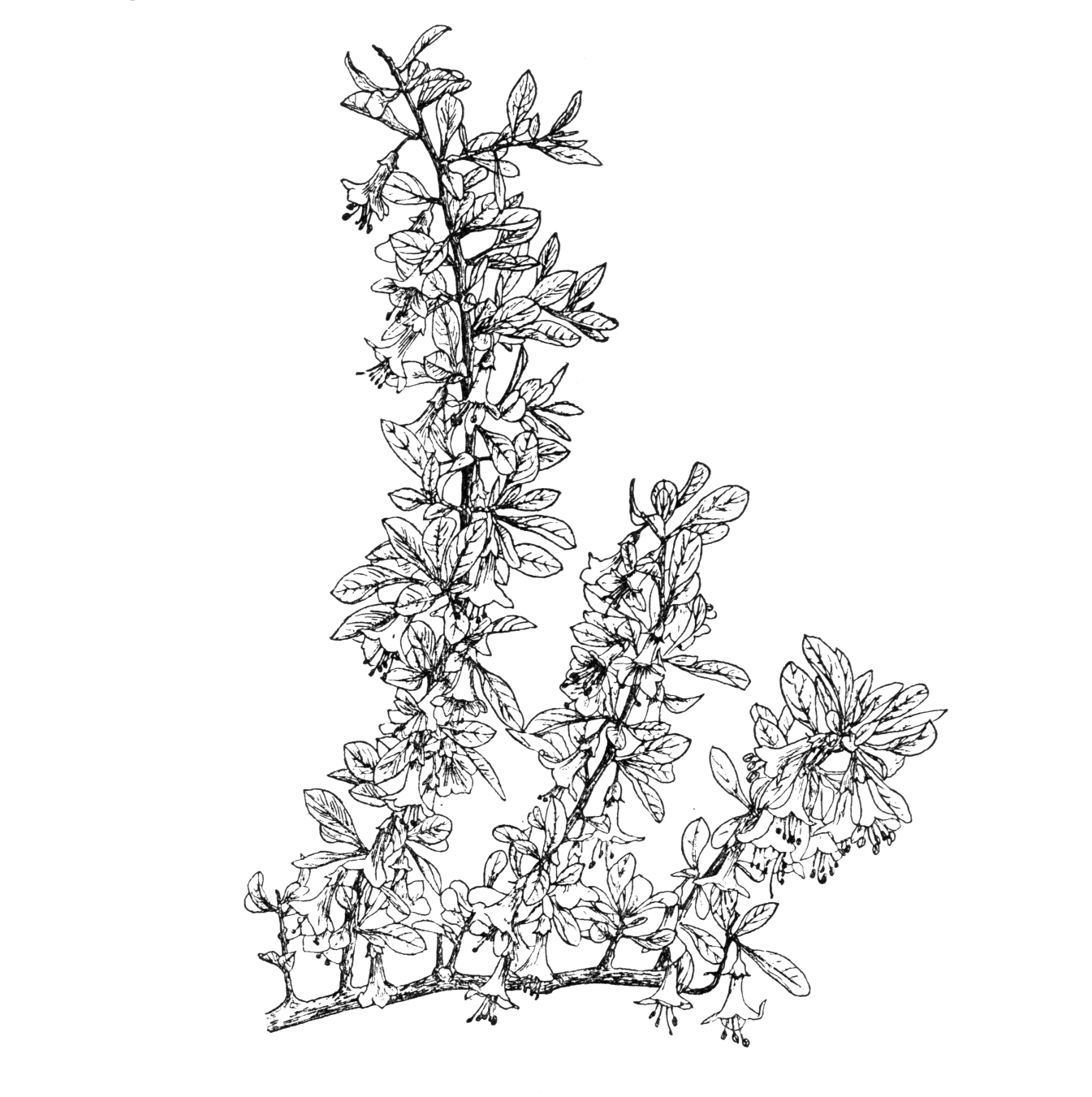Lycium pallidum
Credits
Article from Bean's Trees and Shrubs Hardy in the British Isles
Recommended citation
'Lycium pallidum' from the website Trees and Shrubs Online (treesandshrubsonline.
Genus
A deciduous shrub of rather thin, lax, sprawling habit, at present 5 or 6 ft high in cultivation; branches long, tortuous, or semi-pendulous, quite glabrous, but armed with spines which are really arrested branches, often bearing leaves, sometimes flowers. Leaves oval lance-shaped, up to 2 in. long by 3⁄8 in. wide on the young, non-flowering shoots, but narrowly obovate, 1 in. or less long, and produced in rosettes on the year-old, flowering shoots, quite glabrous, entire, of a glaucous green, tapering at the base to a short stalk. Flowers nodding on stalks 1⁄4 in. long, often solitary or in pairs at each joint. Corolla funnel-shaped, 3⁄4 in. long, 1⁄2 in. wide at the mouth, where are five shallow, rounded lobes, pale green veined with darker lines, and tinged with purple. Calyx bell-shaped, about 1⁄8 in. long, with five pointed lobes. Style much protruded; stamens rather shorter. Fruits scarlet, globose, 3⁄8 in. long; ripe in August. Bot. Mag., t. 8440.
Native of south-western N. America, originally described by Miers from a specimen collected by Fendler in New Mexico, which has the corolla-tube glabrous inside; the form figured in the Botanical Magazine was discovered by Frémont in 1844 on the Rio Virgen, one of the tributaries of the Colorado river, and has the corolla-tube hairy inside below the insertion of the stamens. It was introduced to Kew in 1886. It is a distinct and quite hardy shrub, whose prettily coloured flowers hang in profusion from the underside of the branches, and make it the best of the lyciums in flower. It is also ornamental in fruit, but with us the crop is uncertain. It is best propagated by layering, in the absence of seed. The foliage varies in the intensity of its glaucous hue.

